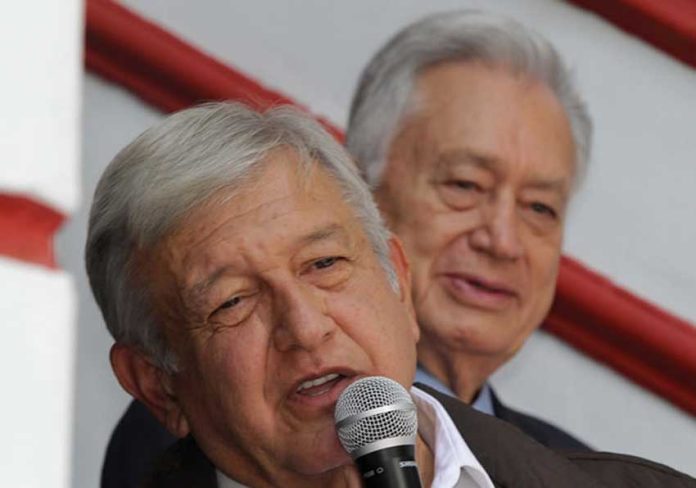A new refinery, upgrades to the existing ones and the elimination of excesses by the petroleum workers’ unions are among the highlights of the new government’s plan to “rescue” the energy sector.
President-elect Andrés Manuel López Obrador announced today that his government will build a new oil refinery in Tabasco with an investment of 160 billion pesos (US $8.6 billion) over three years.
Construction of the facility at Dos Bocas on the coast of the oil-rich Gulf of Mexico will start in early 2019 and is expected to be completed midway through the next president’s six-year term.
López Obrador also said that his administration will invest 49 billion pesos (US $2.6 billion) over two years to revamp the six refineries that are already in operation.
“With this new refinery and the rehabilitation of the six that already exist we’re going to make good on our campaign promise of stopping purchases of gasoline abroad and of lowering fuel prices by the middle of [my] six-year term,” he said.
The president-elect explained that his administration will seek to boost Mexico’s crude oil production from 1.9 million barrels per day (bpd) now to 2.5 million bpd by investing 75 billion pesos (US $4 billion) in oil exploration and drilling during his first year in office.
Mexico has imported an average of 590,000 bpd of gasoline and 232,000 bpd of diesel to date this year, almost exclusively from the United States.
López Obrador also said that his administration will spend about 20 billion pesos (US $1.07 billion) next year to upgrade the power stations operated by the state-owned Federal Electricity Commission (CFE).
“We’re going to start by modernizing hydroelectric plants because we have underutilized infrastructure. We’re going to generate electricity with the dams that currently exist,” he said.
All told, the president-elect said that he expects his administration will spend 175 billion pesos (US $9.4 billion) next year to strengthen Mexico’s energy sector, a process he has earlier described as a rescue.
López Obrador also confirmed that Rocío Nahle, a petrochemical engineer, will be the energy secretary in his administration. She said today the energy sector rescue plan would eradicate excesses, bureaucratic expense and flows of money to unions in the sector.
The government will not be looking to harm workers but nor will it permit further union excesses because the money is needed for energy projects, she said.
Nahle told a press conference that the administration didn’t want to break relations with the unions but instead “reduce the high-level bureaucracy and the superfluous spending.”
López Obrador also announced that Octavio Romero Oropeza will be the new CEO of state oil company Pemex and Manuel Bartlett will head up the CFE.
The former is an agronomist and served in López Obrador’s administration when he was mayor of Mexico City. He is also from López Obrador’s home state of Tabasco.
Bartlett is a former governor of Puebla and served as secretary of the interior under former president Miguel de la Madrid and education secretary under Carlos Salinas de Gortari. He is also a long-term critic of private investment in the energy sector.
The next president will be sworn in on December 1 while the new Congress will first sit on September 1.
Source: El Financiero (sp), Obras Web (sp)
